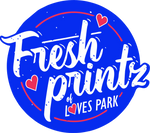-
ThermoFlex PLUS - PLS-9350 MaroonVendor: Specialty MaterialsThe most trusted name in the industry! ThermoFlex Plus is Specialty Materials' most popular heat transfer film. Compare the ease of weeding and applying ThermoFlex Plus with competitive products and discover why so many professionals ask for it by name. ThermoFlex® Plus is available...
- Regular price
- From $3.75
- Regular price
-
- Sale price
- From $3.75
- Unit price
- per
-
ThermoFlex PLUS - PLS-9360 VioletVendor: Specialty MaterialsThe most trusted name in the industry! ThermoFlex Plus is Specialty Materials' most popular heat transfer film. Compare the ease of weeding and applying ThermoFlex Plus with competitive products and discover why so many professionals ask for it by name. ThermoFlex® Plus is available...
- Regular price
- From $3.75
- Regular price
-
- Sale price
- From $3.75
- Unit price
- per
-
ThermoFlex PLUS - PLS-9365 FucshiaVendor: Specialty MaterialsThe most trusted name in the industry! ThermoFlex Plus is Specialty Materials' most popular heat transfer film. Compare the ease of weeding and applying ThermoFlex Plus with competitive products and discover why so many professionals ask for it by name. ThermoFlex® Plus is available...
- Regular price
- From $3.75
- Regular price
-
- Sale price
- From $3.75
- Unit price
- per
-
ThermoFlex PLUS - PLS-9370 Bright PinkVendor: Specialty MaterialsThe most trusted name in the industry! ThermoFlex Plus is Specialty Materials' most popular heat transfer film. Compare the ease of weeding and applying ThermoFlex Plus with competitive products and discover why so many professionals ask for it by name. ThermoFlex® Plus is available...
- Regular price
- From $3.75
- Regular price
-
- Sale price
- From $3.75
- Unit price
- per
-
ThermoFlex PLUS - PLS-9450 Medium YellowVendor: Specialty MaterialsThe most trusted name in the industry! ThermoFlex Plus is Specialty Materials' most popular heat transfer film. Compare the ease of weeding and applying ThermoFlex Plus with competitive products and discover why so many professionals ask for it by name. ThermoFlex® Plus is available...
- Regular price
- From $3.75
- Regular price
-
- Sale price
- From $3.75
- Unit price
- per
-
ThermoFlex PLUS - PLS-9460 Vegas GoldVendor: Specialty MaterialsThe most trusted name in the industry! ThermoFlex Plus is Specialty Materials' most popular heat transfer film. Compare the ease of weeding and applying ThermoFlex Plus with competitive products and discover why so many professionals ask for it by name. ThermoFlex® Plus is available...
- Regular price
- From $3.75
- Regular price
-
- Sale price
- From $3.75
- Unit price
- per
-
ThermoFlex PLUS - PLS-9465 OchreVendor: Specialty MaterialsThe most trusted name in the industry! ThermoFlex Plus is Specialty Materials' most popular heat transfer film. Compare the ease of weeding and applying ThermoFlex Plus with competitive products and discover why so many professionals ask for it by name. ThermoFlex® Plus is available...
- Regular price
- From $3.75
- Regular price
-
- Sale price
- From $3.75
- Unit price
- per
-
ThermoFlex PLUS - PLS-9472 Lemon YellowVendor: Specialty MaterialsThe most trusted name in the industry! ThermoFlex Plus is Specialty Materials' most popular heat transfer film. Compare the ease of weeding and applying ThermoFlex Plus with competitive products and discover why so many professionals ask for it by name. ThermoFlex® Plus is available...
- Regular price
- From $3.75
- Regular price
-
- Sale price
- From $3.75
- Unit price
- per
-
ThermoFlex PLUS - PLS-9473 Bright LemonVendor: Specialty MaterialsThe most trusted name in the industry! ThermoFlex Plus is Specialty Materials' most popular heat transfer film. Compare the ease of weeding and applying ThermoFlex Plus with competitive products and discover why so many professionals ask for it by name. ThermoFlex® Plus is available...
- Regular price
- From $3.75
- Regular price
-
- Sale price
- From $3.75
- Unit price
- per
-
ThermoFlex PLUS - PLS-9475 Pastel YellowVendor: Specialty MaterialsThe most trusted name in the industry! ThermoFlex Plus is Specialty Materials' most popular heat transfer film. Compare the ease of weeding and applying ThermoFlex Plus with competitive products and discover why so many professionals ask for it by name. ThermoFlex® Plus is available...
- Regular price
- From $3.75
- Regular price
-
- Sale price
- From $3.75
- Unit price
- per
-
ThermoFlex PLUS - PLS-9513 Navy BlueVendor: Specialty MaterialsThe most trusted name in the industry! ThermoFlex Plus is Specialty Materials' most popular heat transfer film. Compare the ease of weeding and applying ThermoFlex Plus with competitive products and discover why so many professionals ask for it by name. ThermoFlex® Plus is available...
- Regular price
- From $3.75
- Regular price
-
- Sale price
- From $3.75
- Unit price
- per
-
ThermoFlex PLUS - PLS-9515 Light NavyVendor: Specialty MaterialsThe most trusted name in the industry! ThermoFlex Plus is Specialty Materials' most popular heat transfer film. Compare the ease of weeding and applying ThermoFlex Plus with competitive products and discover why so many professionals ask for it by name. ThermoFlex® Plus is available...
- Regular price
- From $3.75
- Regular price
-
- Sale price
- From $3.75
- Unit price
- per
-
ThermoFlex PLUS - PLS-9519 Reflex BlueVendor: Specialty MaterialsThe most trusted name in the industry! ThermoFlex Plus is Specialty Materials' most popular heat transfer film. Compare the ease of weeding and applying ThermoFlex Plus with competitive products and discover why so many professionals ask for it by name. ThermoFlex® Plus is available...
- Regular price
- From $3.75
- Regular price
-
- Sale price
- From $3.75
- Unit price
- per
-
ThermoFlex PLUS - PLS-9521 Brilliant BlueVendor: Specialty MaterialsThe most trusted name in the industry! ThermoFlex Plus is Specialty Materials' most popular heat transfer film. Compare the ease of weeding and applying ThermoFlex Plus with competitive products and discover why so many professionals ask for it by name. ThermoFlex® Plus is available...
- Regular price
- From $3.75
- Regular price
-
- Sale price
- From $3.75
- Unit price
- per
-
ThermoFlex PLUS - PLS-9522 Royal BlueVendor: Specialty MaterialsThe most trusted name in the industry! ThermoFlex Plus is Specialty Materials' most popular heat transfer film. Compare the ease of weeding and applying ThermoFlex Plus with competitive products and discover why so many professionals ask for it by name. ThermoFlex® Plus is available...
- Regular price
- From $3.75
- Regular price
-
- Sale price
- From $3.75
- Unit price
- per
-
ThermoFlex PLUS - PLS-9524 Air Force BlueVendor: Specialty MaterialsThe most trusted name in the industry! ThermoFlex Plus is Specialty Materials' most popular heat transfer film. Compare the ease of weeding and applying ThermoFlex Plus with competitive products and discover why so many professionals ask for it by name. ThermoFlex® Plus is available...
- Regular price
- From $3.75
- Regular price
-
- Sale price
- From $3.75
- Unit price
- per
-
ThermoFlex PLUS - PLS-9564 SapphireVendor: Specialty MaterialsThe most trusted name in the industry! ThermoFlex Plus is Specialty Materials' most popular heat transfer film. Compare the ease of weeding and applying ThermoFlex Plus with competitive products and discover why so many professionals ask for it by name. ThermoFlex® Plus is available...
- Regular price
- From $3.75
- Regular price
-
- Sale price
- From $3.75
- Unit price
- per
-
ThermoFlex PLUS - PLS-9565 Medium BlueVendor: Specialty MaterialsThe most trusted name in the industry! ThermoFlex Plus is Specialty Materials' most popular heat transfer film. Compare the ease of weeding and applying ThermoFlex Plus with competitive products and discover why so many professionals ask for it by name. ThermoFlex® Plus is available...
- Regular price
- From $3.75
- Regular price
-
- Sale price
- From $3.75
- Unit price
- per
-
ThermoFlex PLUS - PLS-9568 AquamarineVendor: Specialty MaterialsThe most trusted name in the industry! ThermoFlex Plus is Specialty Materials' most popular heat transfer film. Compare the ease of weeding and applying ThermoFlex Plus with competitive products and discover why so many professionals ask for it by name. ThermoFlex® Plus is available...
- Regular price
- From $3.75
- Regular price
-
- Sale price
- From $3.75
- Unit price
- per
-
ThermoFlex PLUS - PLS-9570 Tiffany BlueVendor: Specialty MaterialsThe most trusted name in the industry! ThermoFlex Plus is Specialty Materials' most popular heat transfer film. Compare the ease of weeding and applying ThermoFlex Plus with competitive products and discover why so many professionals ask for it by name. ThermoFlex® Plus is available...
- Regular price
- From $3.75
- Regular price
-
- Sale price
- From $3.75
- Unit price
- per
Recently Viewed Products
Ella
Vendor:
Vendor
- Regular price
- $19.99
- Regular price
-
- Sale price
- $19.99
- Unit price
- per
Ella
Vendor:
Vendor
- Regular price
- $19.99
- Regular price
-
- Sale price
- $19.99
- Unit price
- per
Ella
Vendor:
Vendor
- Regular price
- $19.99
- Regular price
-
- Sale price
- $19.99
- Unit price
- per
Ella
Vendor:
Vendor
- Regular price
- $19.99
- Regular price
-
- Sale price
- $19.99
- Unit price
- per
Ella
Vendor:
Vendor
- Regular price
- $19.99
- Regular price
-
- Sale price
- $19.99
- Unit price
- per
Ella
Vendor:
Vendor
- Regular price
- $19.99
- Regular price
-
- Sale price
- $19.99
- Unit price
- per
Ella
Vendor:
Vendor
- Regular price
- $19.99
- Regular price
-
- Sale price
- $19.99
- Unit price
- per
Ella
Vendor:
Vendor
- Regular price
- $19.99
- Regular price
-
- Sale price
- $19.99
- Unit price
- per
Ella
Vendor:
Vendor
- Regular price
- $19.99
- Regular price
-
- Sale price
- $19.99
- Unit price
- per
Ella
Vendor:
Vendor
- Regular price
- $19.99
- Regular price
-
- Sale price
- $19.99
- Unit price
- per
- Choosing a selection results in a full page refresh.


























